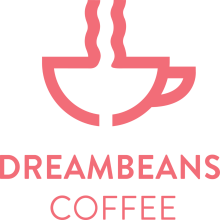Coffee prices are rising around the world
A combination of drought, frost and freight prices has brought coffee prices to a level that hasn’t been seen for nearly a decade. Rising freight costs, reduced shipping capacity and increase consumption of coffee have come together to drive the price ever upwards. It is with great reluctance that we will have to increase the price of all our coffee blends from the beginning of September 2021. This is Dreambeans’ first ever price increase. We have absorbed steadily rising costs since dreambeanscoffee.ie started selling to consumers in 2018 but we can’t maintain our current low prices and stay in business. Unfortunately, our lowest price blends are going to be hardest hit.
We are forced to raise prices
We have no option but to raise our prices. We cannot continue to sell coffee this good at the low prices we have charged until now. We have never changed our prices since we started selling to consumers in 2018.
Cafe Supremo, Sweet Sorrento and French Roast were heading for a price rise anyway, even before the current rise. The constituent coffee origins have simply become too expensive. Sweet Sorrento has two gold stars from the Great Taste Awards. We can’t find a single other example of a two star coffee selling for just €22.80 per kg. It looks like we will have to add at least €3.90 to the price of a kg, which is a 17 percent increase. The spot price of raw coffee has increased by 78% between September 2018 and August 2021 but our prices have remained the same. The price had doubled at the end of July but has fallen back a little since then. The price of the speciality coffee that we buy has increased by much more.
Buy 4, pay for 3 and free shipping still available
Even with these increases, Dreambeans Coffee still has terrific prices for our great coffee and combined with our buy 4, pay for 3 offer and free shipping over €30 will continue. We’re still great value for money.

Frost and drought in Brazil
What is driving these price increases? As usual, it’s a combination of factors. Brazil’s worst drought in almost a century combined with a very unseasonal severe frost in July has had a very significant effect on the forecasts for the coming harvest. Again, the frost has had a disproportionate effect on the best, highest grown beans as the frost was more severe higher up the mountains.
Increased shipping costs
A global shortage of shipping containers and a corresponding increase in shipping costs, made worse by delays and bottlenecks on some of the biggest ports across the globe is adding to shipping times and shipping cost. This is becoming worse instead of better as time goes on.
Port blockades in Colombia and Vietnam
Political protests at the ports in Colombia have delayed shipping and added cost. Similar delays in Vietnam are causing problems with supply. The difficulties in Vietnam don’t affect us directly because Vietnam’s output is mostly Robusta, the shortage of Robusta has lead to instant coffee makers and “coffee pod” makers being forced to buy lower grade Arabica to maintain supply, thus increasing demand for Arabica right up the quality chain, with a proportionately sharper increase in prices at the top, where we buy our raw coffee. Vietnam’s problems look set to continue as the country battles a worsening Covid situation and a renewed lockdown in September. In a normal year, any one of these factors would have an effect on the coffee price but this year it has been unrelenting. See the graph below.

Good relationships are the key to good supply lines.
Given the forecasted shortage, the huge international coffee chains and companies have been hoovering up all the beans they can get, to stockpile as a hedge against rising prices. This is making it harder for some small roasters to get the quality beans we need. If it wasn’t for our long relationships with growers, co-ops and brokers, and the goodwill we have built up over 30 years in the business, we would be getting worried about supply lines. Although prices are rising, thankfully, we are very confident in our own supply networks but we fear that some coffee roasters will find it hard to get all the beans they want over the next two or three seasons until supply balances out. We hope the situation improves quickly.
Pat McArdle

